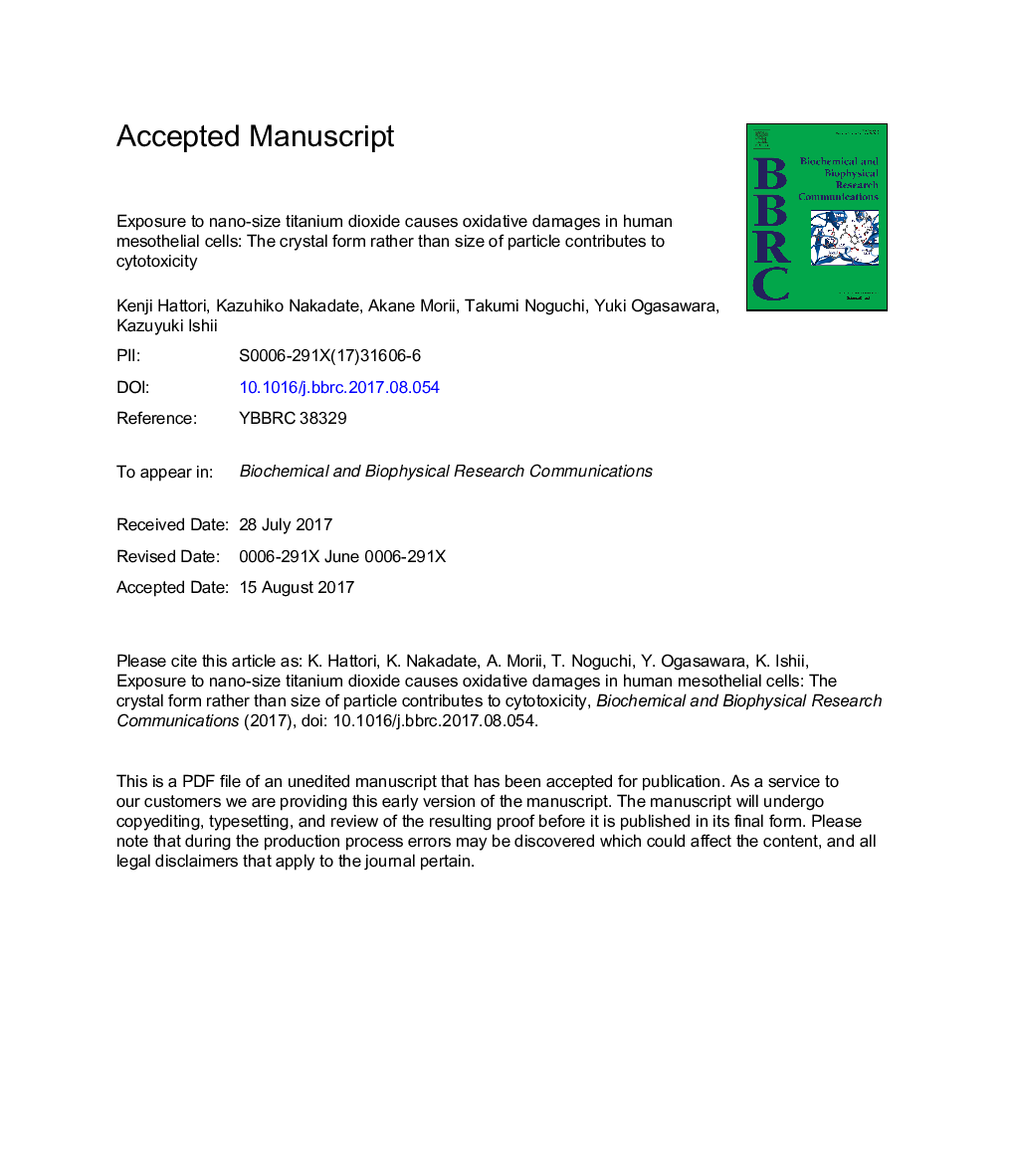| Article ID | Journal | Published Year | Pages | File Type |
|---|---|---|---|---|
| 5504580 | Biochemical and Biophysical Research Communications | 2017 | 26 Pages |
Abstract
In this study, we focused on the morphology as well as the size of titanium dioxide particles. In comparing the effects between nano-size anatase and rutile titanium dioxide on human-derived pleural mesothelial cells, the anatase form was shown to be actively absorbed into cells, producing reactive oxygen species and causing oxidative damage to DNA. In contrast, we showed for the first time that the rutile form is not easily absorbed by cells and, therefore, does not cause oxidative DNA damage and is significantly less damaging to cells. These results suggest that with respect to the toxicity of titanium dioxide particles on human-derived mesothelial cells, the crystal form rather than the particle size has a greater effect on cellular absorption. Also, it was indicated that the difference in absorption is the primary cause of the difference in the toxicity against mesothelial cells.
Keywords
Related Topics
Life Sciences
Biochemistry, Genetics and Molecular Biology
Biochemistry
Authors
Kenji Hattori, Kazuhiko Nakadate, Akane Morii, Takumi Noguchi, Yuki Ogasawara, Kazuyuki Ishii,
